
How to use in-app messaging to retain your best customers
In-app messaging is a key component of a strong customer engagement strategy – one that reaches users in the right place, at the right time, and is consistent across platforms.
With features such as in-app messages, Product Tours, Surveys, and Mobile Carousels, you can build a personalized rapport with customers. Engage with them in the moment, while using your app, in a way that’s tailored to their preferences – thereby, nourishing the customer experience and driving action. And these kinds of features can even be used side-by-side with your existing tech stack to give your offering that extra edge for engaging and retaining your customers.
What is in-app messaging?
In-app messages are hyper-targeted notifications that are sent to users while they’re using your mobile or desktop application, website, or product. You can drive business growth by delivering personal support, at any scale, in the place your customers need and want it most. By engaging users at just the right time and in the right place, you can effectively facilitate onboarding, share product updates, offer support, or promote relevant offers. We describe this as contextual messaging, as you are essentially conversing with the customer in the context of where they are and what they are doing.
“In-app messages are hyper-targeted notifications that are sent to users while they’re using a mobile or desktop application”
Because in-app messages trigger when a user is active within an app, they’re an especially productive way to boost traction with your most engaged users. Their ability to be leveraged for both web and mobile applications make them a key component of a cohesive onboarding, support, and marketing strategy. There are several different types of in-app messages you can send:
Types of in-app messages
Chats and Posts: In Intercom, you can send outbound Chats and Posts in both mobile and desktop apps. Chats and Posts have many different use cases such as asking customers if they need help, announcing product updates, welcoming visitors, or onboarding new users.
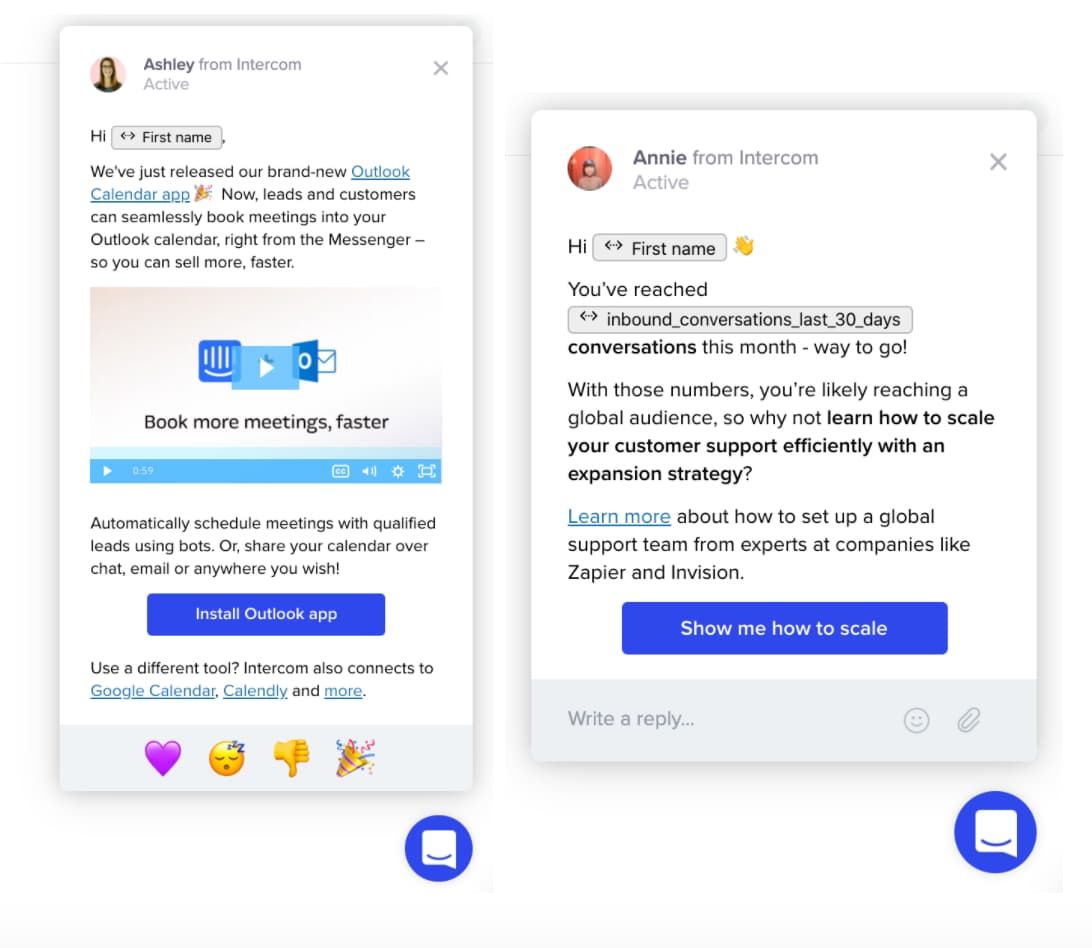
Use a Chat to start a conversation with a user. It would look something like this:
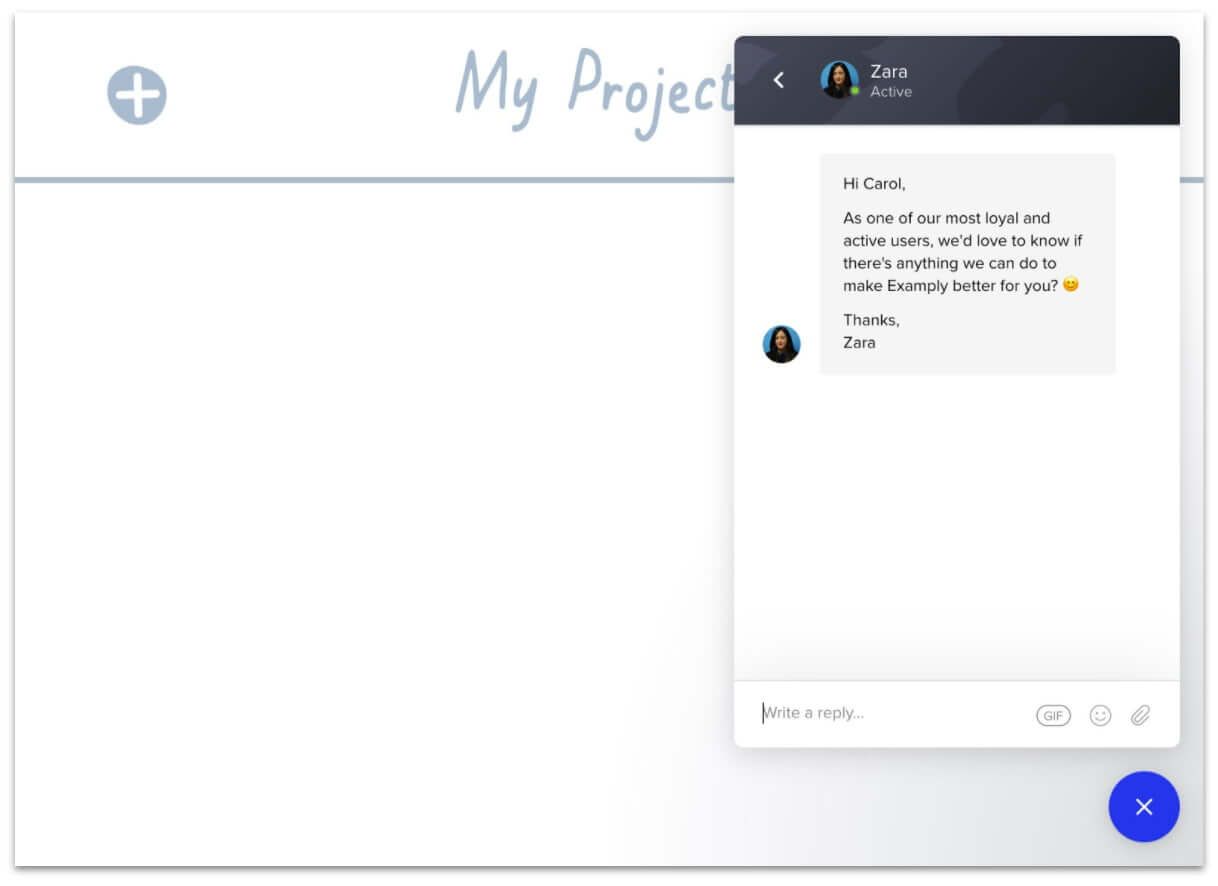
Targeted messages: Target people based on who they are and what they do on your website or product. Create personalized content and promotions and reach out in a way that drives action and results.
Mobile Carousels: Mobile Carousels allow you to onboard users, highlight new features, share marketing promotions or product announcements, and proactively support customers with useful tips all within your native app. They are full-screen experiences that match the look and feel of the app, unlike Chats and Posts, which don’t take up the full screen.
Product Tours: Product Tours are a desktop-only solution that walk a user through the product UI, highlighting the features they’ll need to be successful.
Surveys: Send Surveys at the most opportune time (while they are active in your app or website) and collect high quality feedback that you can use to improve the customer experience and your product or service. This will help you retain more loyal customers.
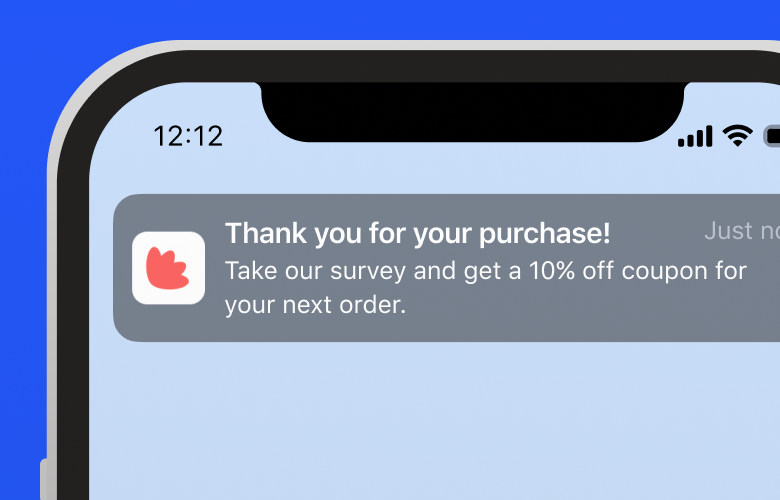
When and where to use in-app messaging
In-app messaging campaigns are so effective because of their ability to hyper-target messages based on audience behaviors, attributes, and their place in the customer journey. Let’s chat through a few ways to use them strategically:
1. Retain users
Keeping long-term users is difficult no matter what industry you’re in. And the issue is particularly pronounced for mobile retention – some 68% of users launch a mobile app less than 10 times after downloading it from the app store.
In-app messaging is a great tool to provide valuable tips and remind users why they should continue using your app or opt-in to certain features. This could be as simple as highlighting their accomplishments or milestones, for example: “You’ve sent 100 messages this month! That’s 25% more than last month 🥳.”
Proactive messaging can resolve common customer questions, as you’ll use automated messages to pre-empt questions from your users before they even come up. By addressing simple questions, like “Where can I see my account details?” customers enjoy simple and speedy resolution and maintain a positive experience.
2. Convert users from a free trial
In-app messaging can also play a crucial role in your expansion strategy for trial users and current customers. The best way to do this is to show the limitations of their current subscription while enticing them with more advanced features.
For example, Vend needed a seamless way to communicate with users when they were coming to the end of their trial. By integrating Salesforce with Intercom they have been able to segment and personalize in-app communication to users at optimal points throughout their journey – and this migration from email to targeted, in-app messaging resulted in a 30% increase in trial-to-paid conversions.
3. Onboard new users
To get users confident and ready to use your app, you can use in-app messaging to create a thorough walkthrough of important features that they need to know to be successful. The best way to do this is to create fun, easy-to-follow, guided experiences that orient the user and keep them focused on completing tasks that lead to adoption.
Use features like Series – the only visual campaign builder that lets you send cohesive messages across channels – to create effective onboarding experiences. Welcome new users with in-app messages, show them around with a Product Tour, then ask them to enable app notifications with Mobile Carousels.
On desktop, you can use Product Tours to actively walk a new user through the different parts of the workspace that they’ll need to understand new functionality or complete a task.
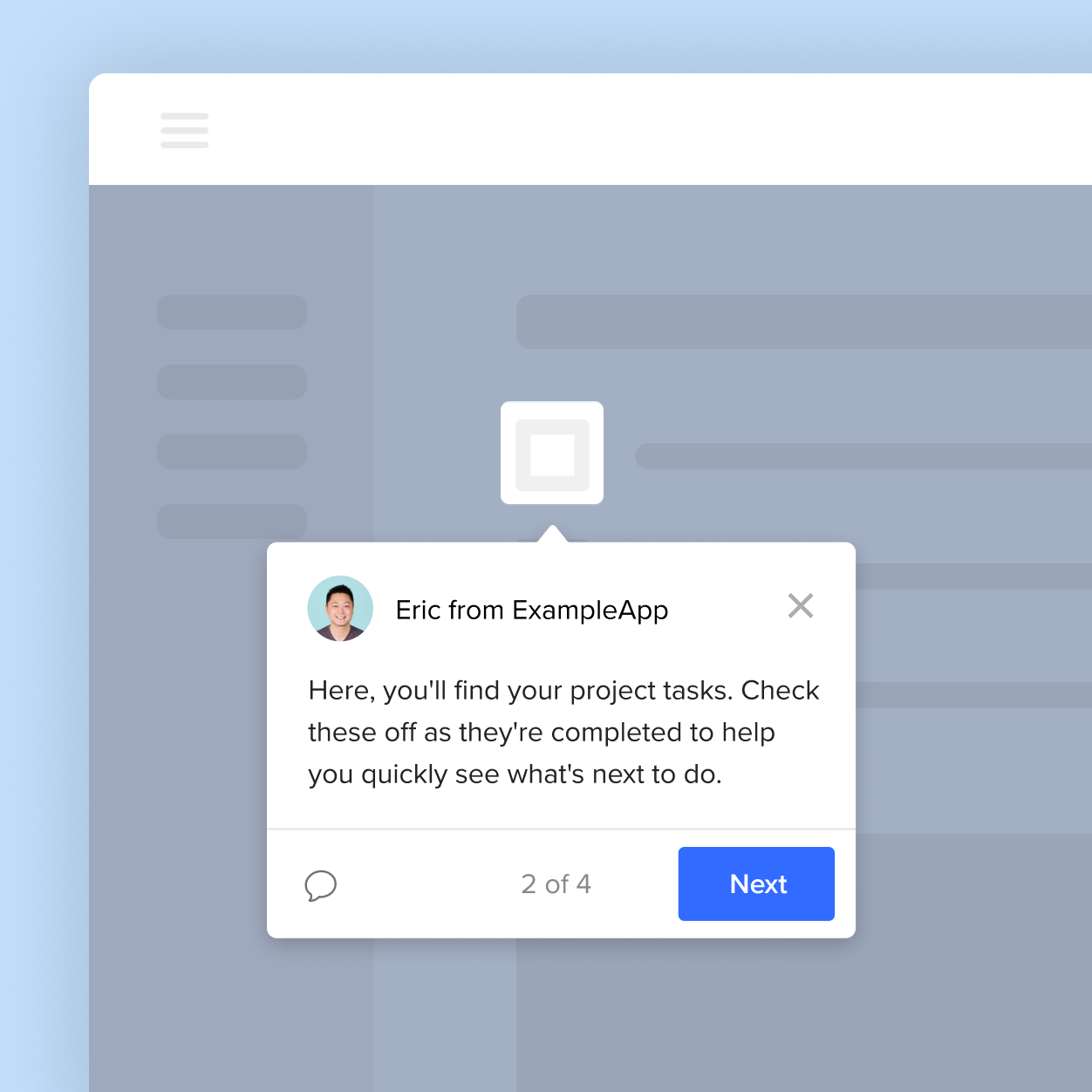
4. Promote stand-out features
If you’re running a promotion on your website, use an in-app message to surface that same promotion on both desktop and mobile to maintain a consistent cross-platform experience.
When promoting a new product feature, an in-app message can show users how to activate that feature or get started using it. Yelp does this with their “Yelp Collections” feature within their mobile app.
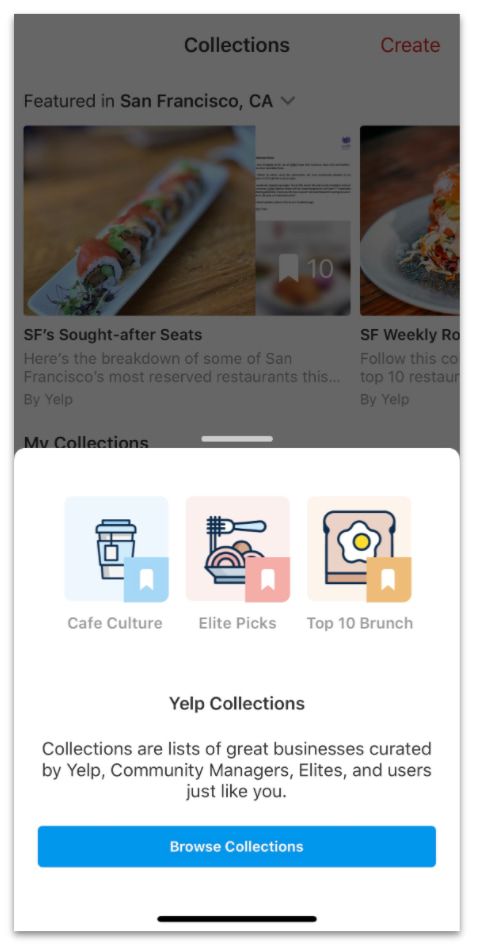
You can also use a custom Mobile Carousel to highlight those new features and invite customers to “try it now!”.
5. Get user feedback
In-app messages are also a great way to get customer feedback on how they are using the app. In Intercom, you can even set parameters for this. For example, if a user has opened your app every day for a week, you can push a message that asks them for feedback.
You can do this with Intercom Surveys, by sending surveys seamlessly across desktop and mobile. Because the surveys are in the context of what customers are currently doing (i.e. using your product), you’ll not only get a higher response rate, but also better quality responses, as customers are already engaged.

Differences between push notifications and in-app messaging
Push notifications and in-app messages are both types of direct messaging channels, but they differ mainly in how they’re used. For the most part, push notifications bring people back to the product whereas in-app messages encourage deeper usage and education while the user is in the app.
Push notifications: Sent even if a user isn’t actively in an app
Push notifications are sent straight to a user’s mobile home screen, and often try to win them back to make a purchase, complete a goal or stay up to date on app activity.
In-app: Must be on the app
In-app messages are only viewable on the app while you’re using it. Read: they won’t show up on a phone’s home screen, and only will surface when a user is actively using the app.
Push: Meant to re-engage users
Push notifications are meant to get users back onto the app. They also might be used to send real time updates on order status, safety alerts, etc.
In-app: Target your most active users
In-app notifications are meant to show active users features, promotional material, updates, and other information related to the app.
7 best practices for in-app messaging
To optimize your in-app messaging strategy, there’s a few key things you need to do to ensure its success:
1. Provide an easy exit
Give users a way to exit out of the in-app message. If customers can’t find an exit route, chances are they’ll just end up closing the app instead.
2. Make it visually appealing
Nobody wants to see a black and white box with a message in it. Design the message so that it reflects your app’s color scheme and fonts.
3. Pay attention to metrics
See how many users are receiving the in-app message and how many actually act upon it.
4. Use rules to target messages
Target your in-app messages to the right crowd. Set up rules to target different audiences, like users who haven’t opened the app or visited the website in over a month, or users who have engaged every day.
5. Test, test, and test some more
As a rule of thumb, you should always test in-app messages to see which ones are delivered with the most success. In Intercom, it’s easy to iterate messages based on performance. A few A/B tests for in-app messages you can run include:
- Image versus no image: Do users react better to messages with images, or messages without?
- Author name: Who is the message coming from? Do users respond better to one particular author?
- Designed note vs plain text chat format: In one test we ran, users responded significantly better to a plain text message as opposed to a designed one.
- Headline versus no headline: See if users prefer a catchy headline to no headline at all.
- General in-app location vs targeted in-app location: Figure out if targeted messages or general messages to your entire user base work better. Have your message show on specific pages within your app or whichever page they land on after signing in.
6. Set up follow-up actions
Create an automated trigger to follow up with a specific audience. For example, you could set up a chatbot to respond automatically to users who answer your message.
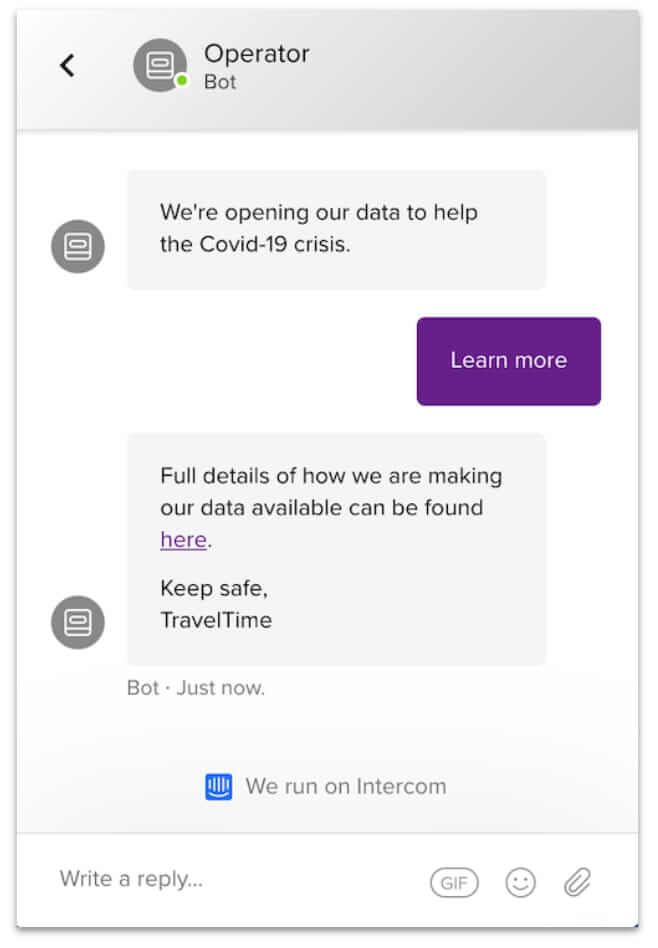
7. Create consistent in-app messaging experiences across web and mobile
Provide the same app experience for your customers on both desktop and mobile. A consistent look and feel across both web and mobile will increase engagement, provide you with richer customer data, and elevate the CX of your platform.
Sidekicker, a company that’s revolutionizing the staffing industry by using tech to create a better experience for companies and their employees, have implemented a cross-platform strategy that leverages in-app messaging to get their end users to apply to jobs in their app.
They see a direct correlation between an increase in engagement and creating a consistent web and mobile experience. They told us, “We’ve found in-app messages to be the most effective way to increase engagement with our mobile app users.”
When customers engage with a brand, they expect the same top-notch experience across both web and mobile platforms. Your in-app messages are no exception. With Intercom, you can customize them to stay consistent with your branding, optimize them for new promotions, and push major updates across multiple channels.
3 brands leading the way with in-app messaging
Coda creates the ultimate experience with contextual feedback
Coda uses Intercom Surveys during the onboarding process and to measure NPS in order to contextualize customers’ experiences and drive action based on direct, in-the-moment feedback. If somebody is having a negative or not-so-great experience with their onboarding journey, the sales team shares that information with their support team so they can step in to help at the right moment. As a result, the team sees consistently high customer satisfaction scores – frequently sitting above 95%.
Livestorm drives action with guided product tours
Livestorm uses chat and in-product guided Product Tours to bring customers out of emails and into the product – driving action and making it as easy as possible to have conversations with customers and solve their problems. Now, they’re seeing an average completion rate across all of their tours of 50% – with some reaching as high as 95%.
Unity doubles down on churn reduction
Unity Technologies, a 3D gaming development platform, uses in-app messages for onboarding support and expansion outreach. Automated, proactive messages like these prevent 10% of customers from churning alone.
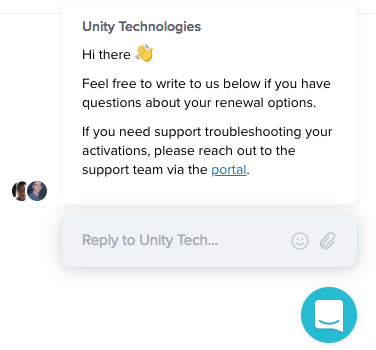
Get started with your in-app messaging strategy
Ready to get started? First, brainstorm actions that your customers need to both know and do based on their use case, activity level, and any other attribute that you segment your customers by. Differentiate between the ongoing “always-on” messages needed for common user goals and the one-offs for product updates and general announcements.
Now, map the ongoing actions along the customer’s journey from the onboarding stage through retention. Be sure to take note of engagement indicators like activation, milestones, inactivity, and churn. Use in-app messages to help users navigate towards whatever success may look like in your app and encourage specific actions to keep them engaged.
Depending on what makes the most sense for your business, some of these messages can be mirrored on mobile. Mobile messages will be more truncated than desktop messages, and their use will depend on the importance of the message. If you’re not sure which channel to use, think about how many users it will affect and the potential level of impact.
If you want to take a closer look at our powerful messaging platform, watch a demo of Intercom’s Customer Engagement solution! And if you’re interested in learning more, check out some of our other resources:







